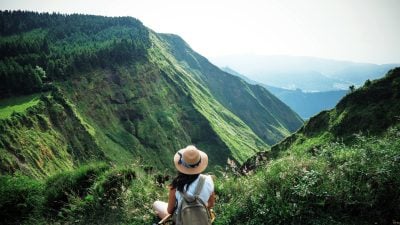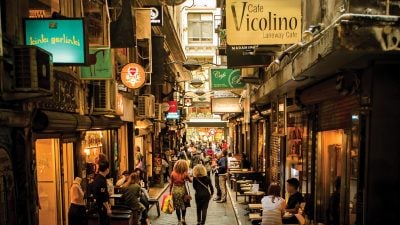Home / Africa & Middle East / Exploring Great Religions on W…
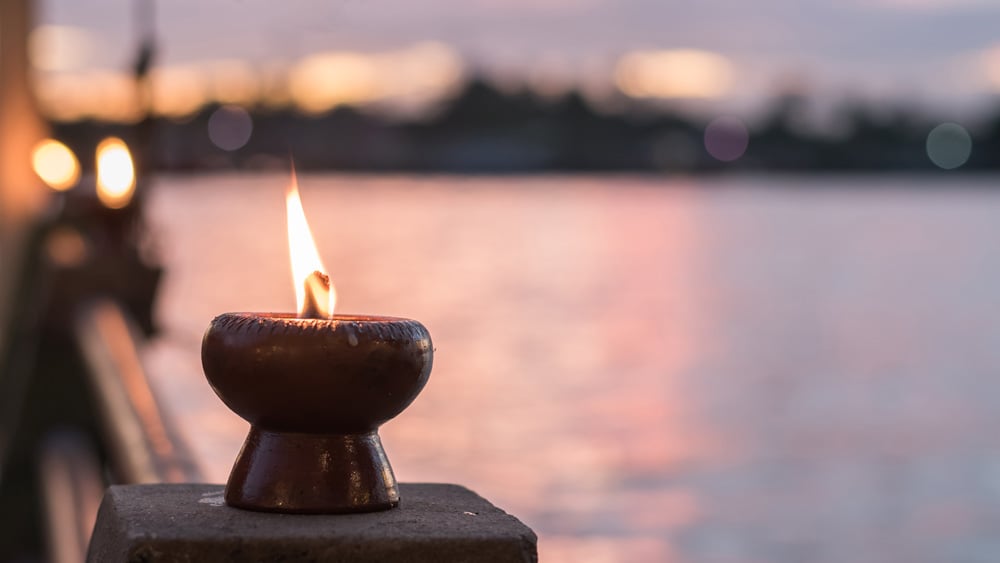
Exploring Great Religions on World Travel
Religion offers a reason to travel across the world. And I’m not just talking about pilgrimage, whether the Hajj, which requires Muslims to make a trip to Mecca at least once in their lifetime, or the hiking trails along the Camino de Santiago in Western Spain, one of the most significant pilgrimages in Christianity. I mean religion, the cultural foundation that informs not only people’s beliefs, but their art, their architecture, their family structures, their class, their food, their drink, and, more than anything, their history. If you are a lover of culture, a student of history, or simply curious, world travel takes you on a journey to the landmarks of the world’s great religions, and will inform, surprise, and shed light on a fundamental aspect of human existence.
Where to Go to Explore the World’s Great Religions?
Jerusalem is One Holy City for Three Faiths
Jerusalem is a holy city, and not just for one religious group, but for three of the largest and most significant in the world: Judaism, Christianity, and Islam. With this overwhelming religious significance comes a wealth of historical attractions tied to religious figures of the past, as well as constant reminders of the city’s spiritual power in the present. Thus, it’s the most obvious choice, on world travel, to explore the world’s great religions.
Central to its importance is Jerusalem’s place in Jewish history. Not only was it the historical capital of Israel, known as the City of David, but it was also the site of the Jewish Temple, the centre of Jewish worship, and the eschatological centre of the world. The Babylonians destroyed the first temple in 586 BC and the Romans destroyed the second temple in 70 AD. All that remains of the temple today is a portion of the retaining wall known as the Western Wall, which is the holiest site of prayer and pilgrimage within Judaism. Devout Jews visit the temple on pilgrimage and write prayer requests onto slits of paper and then wedge these papers into the slits of the old stone wall. It’s a profound site to witness and undoubtedly something you’ll remember for a lifetime.
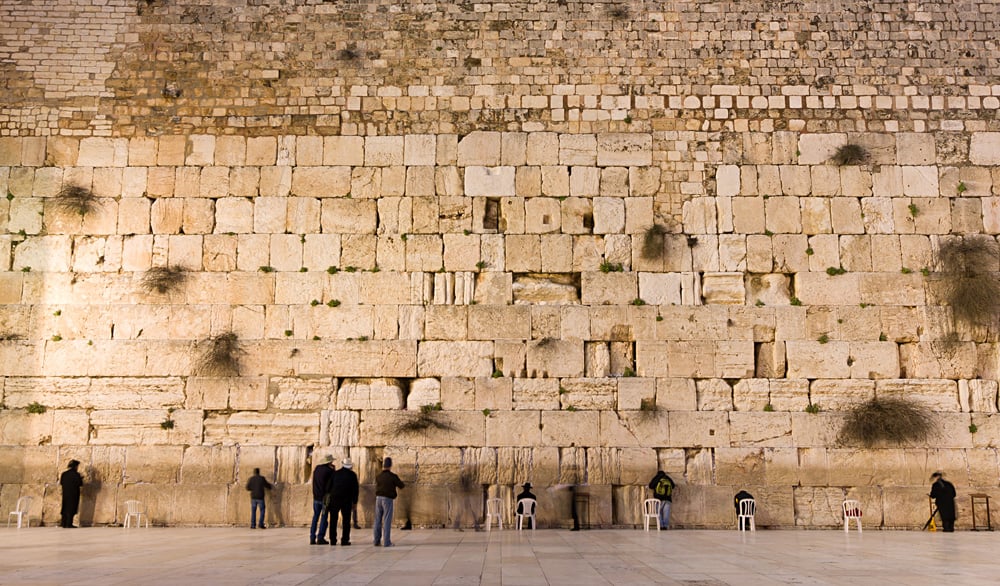
The Western Wall lies within the Temple Mount, a portion of the Old City that contains many of the holiest sites in the three religions. It’s there you also find the Al-Aqsa Mosque and the Dome of the Rock, two of Islam’s greatest landmarks. The Al-Aqsa Mosque marks the spot where the Prophet Muhammad landed after riding his steed, Buraq, from Mecca to Jerusalem during the Night Journey. The Dome of the Rock lies within the mosque’s compound and is even more splendid, with its gold-capped dome and marble mosaic façade. Both sites are only accessible to Muslims, but they’re unforgettable even from the outside.
The Christian holy sites in Jerusalem lie beyond the Temple Mount, but still within the Old City. Jesus of Nazareth spent the last week of his life in the city, which culminated in his trial and execution by the Romans at Golgotha or Calvary. Today, if you follow the 14 Stations of the Cross along Via Dolorosa, or, the Way of Grief in Latin – which follows the route that Jesus walked on the way to his execution – you’ll reach the Church of the Holy Sepulchre. It is the location of the tomb where he was buried and resurrected. Beyond the Via Dolorosa, the Tomb of the Virgin Mary is believed to be the tomb of Mary, the mother of Jesus, within the Eastern Orthodox Church, while the Chapel of the Ascension marks the spot where Jesus ascended into heaven. No matter your religious beliefs, the holy sites of Jerusalem offer a wealth of history and culture worth exploring on world travel.

Vatican City is the Heart of Roman Catholicism
In downtown Rome lies Vatican City, the world’s smallest nation and the centre of the Roman Catholic Church, seat of the Pope, and the sacred heart of Christianity for over a billion believers. The Roman Catholic Church remains Christianity’s largest denomination and its oldest, with direct pastoral authority leading back to St. Peter, one of Jesus’ 12 Disciples and the original Bishop of Rome. This makes Vatican City one of the most important sites in Christianity. It’s also one of the world’s great treasure troves.
Vatican City is only 44ha large and has a population of less than a thousand, which means you can easily see its major sites in a day. You need only walk into St. Peter’s Square to cross the border and bear witness to the immense artistic beauty of the nation. St. Peter’s Basilica, the largest church in the world, lies in the city’s centre. To either side lie curving pillars and access to various Papal palaces. On Wednesdays, the Pope gives general audiences to crowds in the square. On Sundays, he also gives an address at noon from the balcony of his apartment. You need to get tickets ahead of time to attend these audiences, but the tickets are free.
If you don’t want to brave the crowds of a papal audience, avoid Wednesdays and Sundays. You should also consider booking a skip-the-line ticket to St. Peter’s Basilica or the Vatican Museums, as the lineups can be sizeable depending on the season and time of day. Regardless, you need to make time to see St. Peter’s Basilica and the Sistine Chapel while on your Italy vacation. As mentioned before, St. Peter’s Basilica is the largest church in the world and the site of the tomb of St. Peter. It’s among the holiest sites in Christianity. The Vatican Museums are not sacred per se, but they do contain some of the greatest artworks of the western world, including the paintings of Raphael and the frescoes of Michelangelo in the Sistine Chapel. The Sistine Chapel is so beautiful, seeing it is almost a religious experience in its own right.
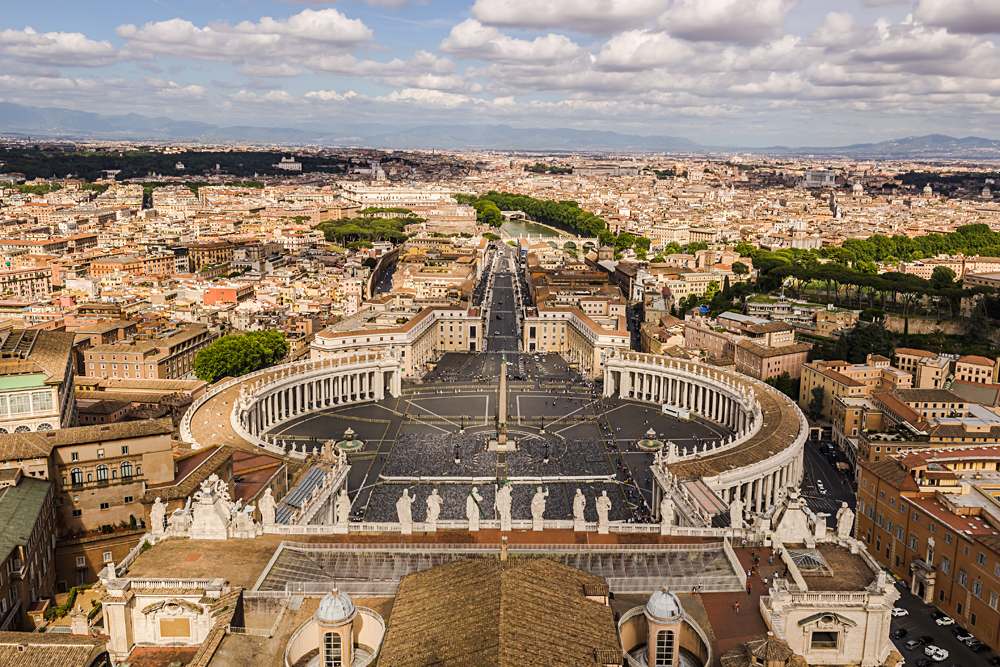
Lhasa is the Sacred Roof of the World for Tibetan Buddhism
There are many sacred Buddhist places across the Asian world, but few have the overwhelming power of Lhasa, the capital of Tibet and the former home of the Dalai Lama. The landscape certainly helps. Located at an altitude of 3,700m, the Tibetan capital is set against a backdrop of mountains that makes it seem like it’s sitting above the world, which is fitting since the Tibetan Plateau is known as the Roof of the World.
Potala Palace is at the centre of the city’s religious history. This massive palace sits atop Red Mountain, with its stark-white façade standing out against the red of the soil. Before 1959, the palace was the home of the Dalai Lama, who lived within its thousand rooms. Since the Dalai Lama’s exile to India following Chinese annexation, the palace has become a museum. You can visit each day, although there is a cap on daily visitors in order to preserve the palace’s structure and atmosphere.
Luckily, there are many other holy sites within Lhasa to see. Built in the 7th century, Jokhang Temple is largely considered the most sacred temple in Tibet. Part of the highlight of a visit here is seeing the continuous streams of pilgrims paying respects by prostrating themselves outside the temple as well as the many monks that hold rituals within the temple. Drepung Monastery is similarly revered. It was apparently once the largest monastery in the world and home to 7,000 monks. Today, it’s essentially a self-sufficient village within the greater Lhasa region, with monks going about their daily rituals, which include preparing flour and yak-butter tea, as well as debating each other in a rigorous Tibetan-style, which involves far more gesticulating than in a western debate. Both Ganden Monastery and Sera Monastery also offer insight into Tibetan Buddhist rituals and, on world travel, offer you a glimpse into the life of a monk, as well as the lives of Tibetan pilgrims that visit each day.
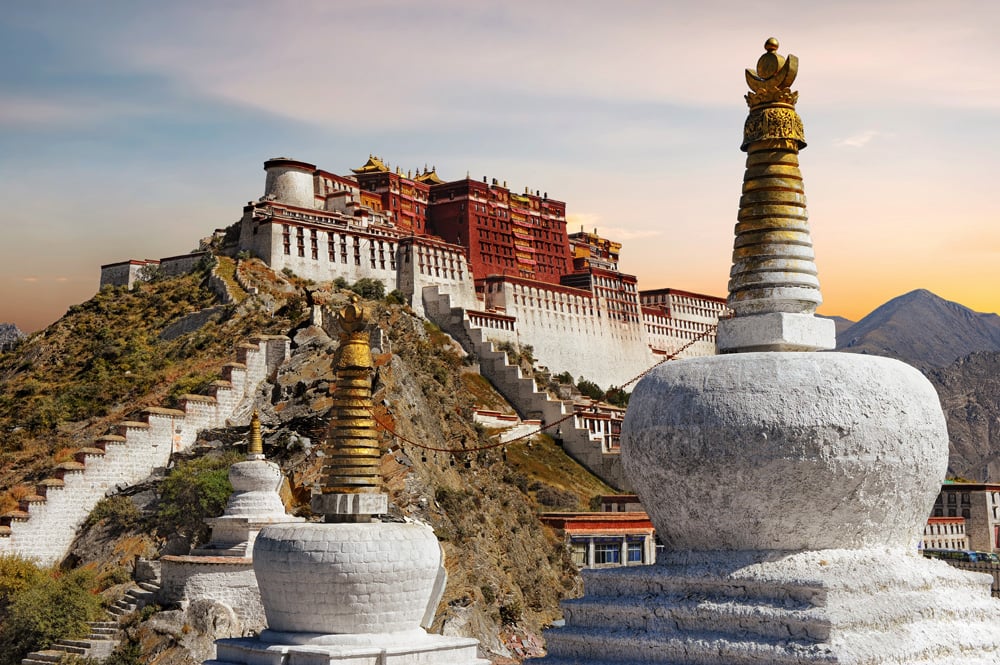
Varanasi lies on the Holy Banks of the Ganges
India has more sacred sites than any other country in the world, seeing as it’s a cradle of civilization. But Varanasi is first among equals, largely due to its location upon the banks of the River Ganges, where devout Hindus cremate their dead, burning their bodies upon the intricate ghats that lie along the river.
Varanasi dates back to at least the 11th century BC and has been the spiritual capital of the country for nearly as long. There are around 2,000 temples within the city, including Shri Kashi Vishwanath Temple or the Golden Temple, which is dedicated to Shiva and arguably one of India’s top temples. In Varanasi, it’s impossible not to be drawn in by the mystical atmosphere and the sounds of people by the river, temple rituals, and the ever-burning funeral pyres of the ghats.
Many Hindu pilgrims venture to Varanasi to bathe in the ashes of the river, cleansing themselves in an attempt to attain Moksha. While it’s unlikely you’ll want to join in the ritual bathing, you absolutely should make the time for a river cruise, while will take you along the most popular ghats to witness the funerary rites, as well as get the best view of the city’s magnificent architecture. A sunrise or sunset cruise is especially memorable, as the first or last lights of day cast the river in a golden hue and seem to bridge the gap between this world and beyond.

Ise Jingu is Japan’s Grand Shrine
Shintoism often goes unmentioned when discussing the world’s great religions because it is as modest a religion as exists in the modern world. For instance, unlike the grand temples of Buddhism, the shrines of Shintoism are monochromatic and wooden, immaculately-made but unadorned with elaborate designs or paint. As opposed to the grand Buddhist shrines that dazzle with their golden treasures or beautiful artworks that are open for the whole world to see, the great shrines of Shintoism are hidden away from the public, accessed by only the royal family or the highest of the clergy. But these shrines are no less impressive, nor is the energy that surrounds them any less palpable than at sacred sites of the world’s other religions.
Of all the great Shinto landmarks, none are as venerated as Ise Jingu, the grand shrine located in Ise in the Mie province of Honshu, southeast of Osaka. Dating back to the 7th century, the shrine reached its religious peak during the Edo period, when one in 10 Japanese citizens would pilgrimage to the site. Today, it remains a popular site of pilgrimage in Japan, with six million annual visitors, even if the inner shrines are accessible only to the high priestess and the members of the royal family.
Aside from the gorgeous natural surroundings of the shrine and its immaculate wooden design, Ise Jingu is most remarkable for its continual process of renewal. Every 20 years the shrine is rebuilt according to ancient techniques, meaning no nails and only wooden dowels and interlocking joints. The old wood is then reconstructed into a torii at the shrine’s entrance or incorporated into other Shinto shrines around Japan. Ise Jingu embodies renewal, both spiritual and temporal. If you visit Ise Jingu, you will experience the true quiet of Shintoism, at one with the natural world that surrounds it.

The world’s great religions may not hold the same meaning for every traveller, but they do offer undeniable reasons to explore some of the great centres of the world. These landmarks of some of the great religions offer a chance to explore human history, engage with breathtaking artistry, and experience a touch of the sublime on world travel.
Get more travel inspiration by email.
Subscribe
0 Comments

Get the latest travel trends & hear about the best deals on vacations around the world.
If you’re a Globetrotter, these are the newsletters for you!


